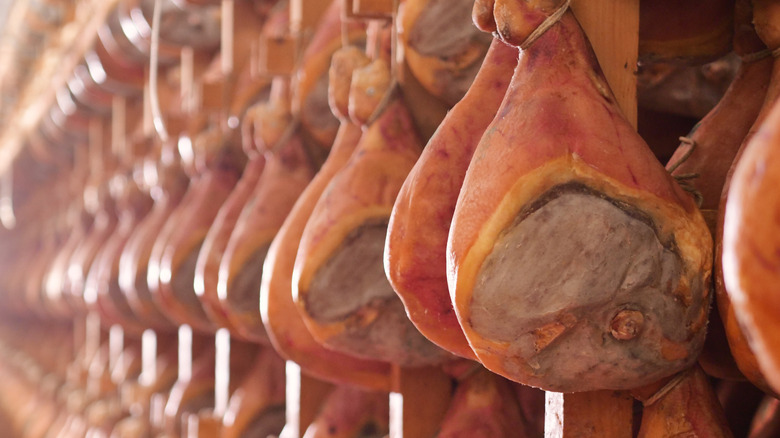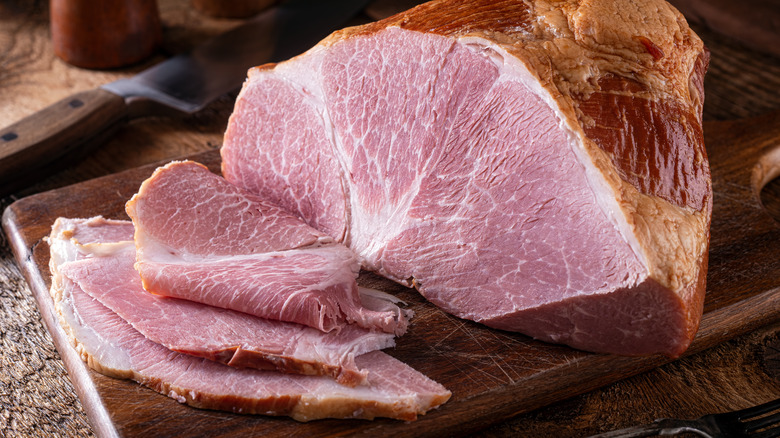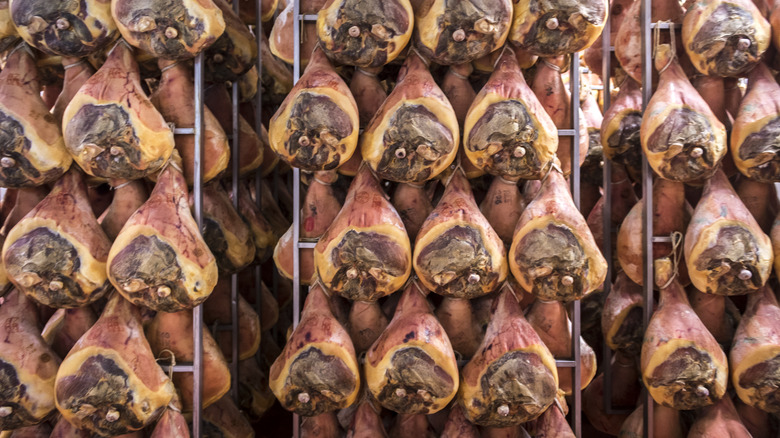What Makes Aged Ham Unique?
For many families, holidays aren't complete without a glorious ham at the center of the table. Hams have a way of making the meal look beautiful with their impressive size, shiny glazes, and mouthwatering, salty flavor. There are so many varieties of ham, which makes it a bit confusing when it's time to choose one. First, there are the different styles, such as spiral ham, boneless, bone-in, and partially boned — and each may be cut from the butt end or the shank. When choosing, keep in mind that the shank portion is fattier, meaning it's a juicier chunk of meat with great flavor. However, the butt is leaner and easier to slice because of the way it's cut.
After the cuts, there are different methods of preparation. The most common methods used are curing, aging, or smoking. Although only one approach is referred to as curing, all three techniques involves curing the ham. Let's look at how each process is done and what makes aged ham especially unique.
Cured vs. smoked ham
Cured hams are injected with a brine that is comprised of salt, water, spices, and compounds such as potassium chloride. After this step, the ham is cooked until it reaches 150 degrees Fahrenheit inside (per The Spruce Eats). Both the brining and the cooking get rid of bacteria and make the ham safe to consume — ready to be used as deli meat or packaged for use in home kitchens.
Smoked hams use a cold-smoking method and are first cured in a salt brine. After that, they are placed in a kiln or smokehouse where they hang and absorb the smoke for days or even weeks at around 60 degrees Fahrenheit. At this low temperature, the chemicals from the smoke act as a natural barrier, protecting the ham from the growth of bacteria. The result is a pre-cooked ham that has a long shelf life and a wonderful smokey flavor.
The end result of a cured or smoked ham is quite similar. Aged ham, however, is a particular type of ham that often takes years to develop its flavors.
Why aged ham is unique
Varieties of aged ham include the infamous Italian prosciutto, the all-American country ham, and the Spanish jamón serrano. Aging hams does not require brining or smoking. They do, however, need lots of salt and seasoning for flavor and proper aging. Unlike with other hams, it takes one to five years for a ham to age and reach the point where it's safe to be sold and consumed.
Rather than being cooked, the ham is hung in a well-ventilated room kept at an exact temperature and level of humidity. As it ages, a layer of mold forms on the outside. This crust isn't dangerous, as it actually protects the ham from bacteria and helps with the flavor maturation. When the aging process is complete, the mold is removed and the ham is thoroughly washed and dried. Afterward, it's ready to be enjoyed.
Aged ham is the most expensive of all the hams, with some types being quite rare and prized. According to CNBC, the most expensive aged ham you can buy is the jamón ibérico de bellota from Spain. It sells for up to $4,500 for a 13- to 17-pound leg. Another aged ham that is considered the best of the best hails from Italy. The Prosciutto Crudo di Parma follows strict Italian guidelines, including the fact that it must hail from Parma, Italy.


